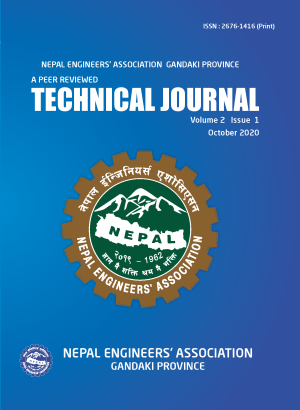Water Quality in Pokhara: A Study with Microbiological Aspects
DOI:
https://doi.org/10.3126/tj.v2i1.32852Keywords:
Water quality, coliform bacteria, WHO, hlorination, sand filtrationAbstract
Obviously, water management is challenging issue in developing world. Dwellers of Pokhara use water from government supply along with deep borings and other sources as well. Nowadays, people are also showing tendency towards more use of processed water. In spite of its importance, quality analysis of water has been less emphasized by concerned sectors in our cities including Pokhara. The study aimed for qualitative analysis of water in the city with focus on microbiological aspects. For this purpose, results of laboratory examination of water samples from major sources of government supply, deep borings, hospitals, academic institutions as well as key water bodies situated in Pokhara were analyzed. Since water borne diseases are considered quite common in the area, presence of coliform bacteria was considered for the study to assess the question on availability of safe water. The result showed that all the samples during wet seasons of major water sources of water in Pokhara were contaminated by coliform bacteria. Likewise, in all 20 locations of Seti River, the coliform bacteria were recorded. Similar results with biological contamination in all samples were observed after laboratory examination of more than 60 locations of all three lakes: Phewa Lake, Begnas Lake and Rupa Lake in Pokhara. The presence of such bacteria in most of the water samples of main sources during wet seasons revealed the possibilities of spreading water related diseases. Again, microbiological contamination observed from significant number of bottled water samples as well as boring sources clearly alarmed the preoccupied belief in such supply of water. On the other hand, fluctuating water quality of academic institutions and hospitals questioned on the priority of the management and seriousness against possible spreading of water borne diseases. For obtaining the safe water, various treatment options have been recommended from World Health Organization (WHO) with chlorination in top priority due to affordability and simplicity. Urgent execution of such option could be important with due consideration of negative aspects from the possible byproducts. However, proper implementation of filtration technique and planning of further advanced technology could be valuable for fulfilling the need of metropolitan dwellers to get wholesome water for their daily consumption.
Downloads
Downloads
Published
How to Cite
Issue
Section
License
© Technical Journal
Authors are required to transfer their copyright to the journal.




